Casio made a bold design choice with the successor to its PX-160 model: The Casio PX-S1000 honors the portable piano genre with its sleek design while enhancing its tried-and-true features.
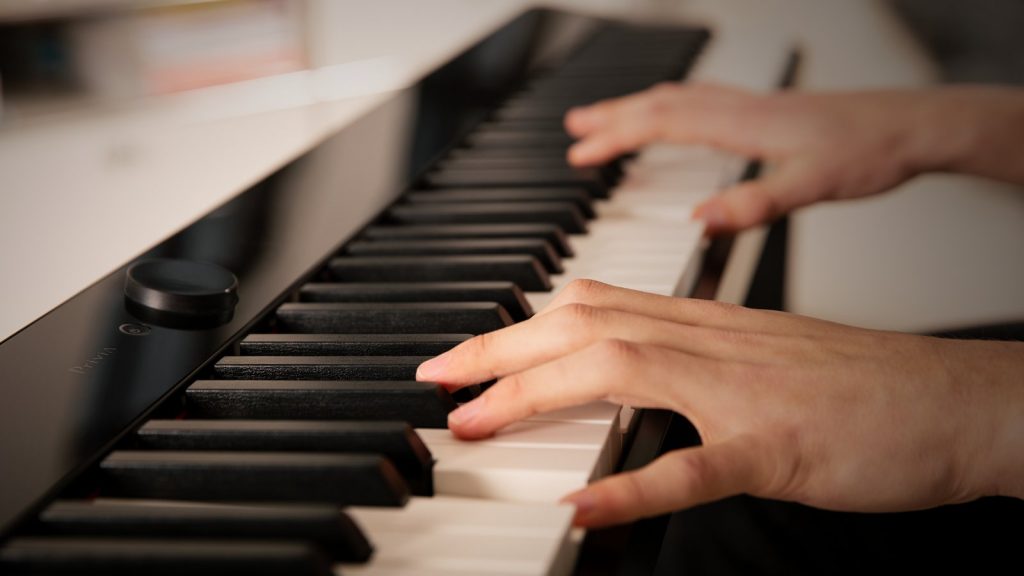
Casio made a bold design choice with the successor to its PX-160 model: The Casio PX-S1000 honors the portable piano genre with its sleek design while enhancing its tried-and-true features.
A newer model will replace the PX-S1000 starting at the end of October 2021. While maintaining the same design, the new Casio PX-S1100 boasts improvements to the piano sound and speaker system. It also has a Bluetooth function for MIDI and audio. The larger PX-S3000 model has also been redesigned—the new model is the PX-S3100.
More compact than ever: The PX-S1000 weighs 11.2 kilos and measures 132.2 x 23.2 x 10.2 centimeters (W x H x D). This makes it even more compact than the already rather slim Casio PX-160. At first glance, the S1000 almost looks like a simple MIDI controller intended for computer use only. You would hardly expect it to have built-in speakers!
The Casio PX-S1000 is available in black or white and has a chic, glossy surface finish. The control panel is strikingly different; the power button and volume knob are the only conventional elements. Seven illuminated touch buttons control the rest.
All of this emphasizes the slim look and contributes to the stylish overall impression of this portable piano. In fact, the Casio PX-S1000 recently won the “Red Dot Award” in the “Product Design” category.
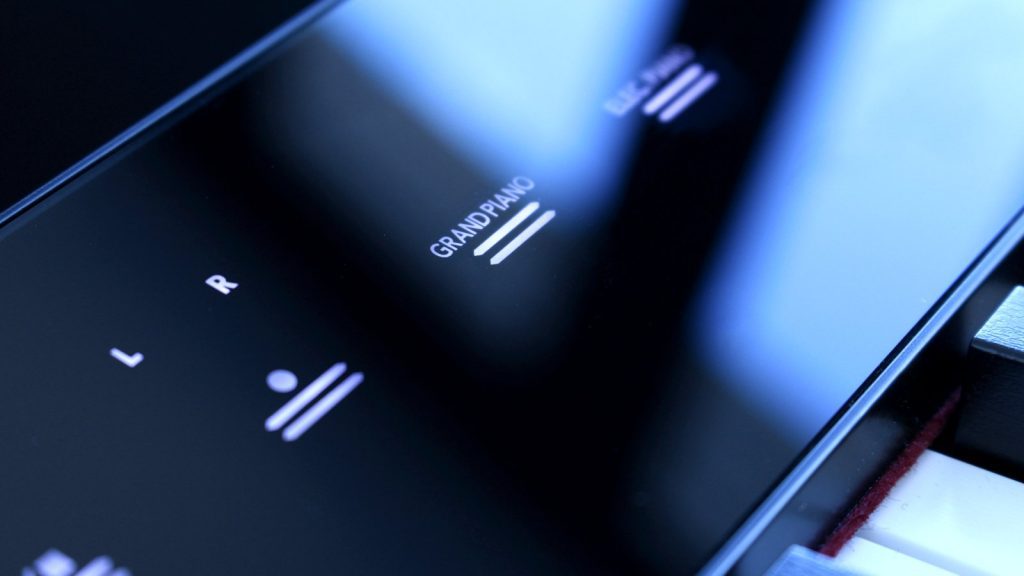
As with most portable pianos, Casio offers optional accessories for the PX-S1000, including a matching stand (CS-68) and a triple pedal unit (SP-34). These accessories make the PX-S1000 an inexpensive alternative to a digital upright piano. For mobile use, the optional SC-800P transport case is available, and thanks to its straps, it can also be used as a backpack. The Casio PX-S1000 never runs out of power thanks to an included external power supply or six AA batteries.
Casio offers an optional decent sustain pedal, but you can also use universal digital piano pedals. Technically, the Casio PX-S1000 supports the half-pedal function, but this is impossible with the included damper footswitch.
Casio developed an entirely new keyboard for the PX-S1000. Its mechanics are lighter and about 20% smaller than those of previous models. Nevertheless, it’s a fully functional hammer-action keyboard with graded weighting and an improved ivory surface. It is one of the best keyboards in the compact, entry-level class.
The Smart Scaled Hammer Action with heavier key weights in the bass and lighter ones in the treble contributes to a proper piano playing feel. The repetition is quite good and the roughened key tops provide a good grip. With five dynamic curves, players can adjust the touch sensitivity to suit their taste.
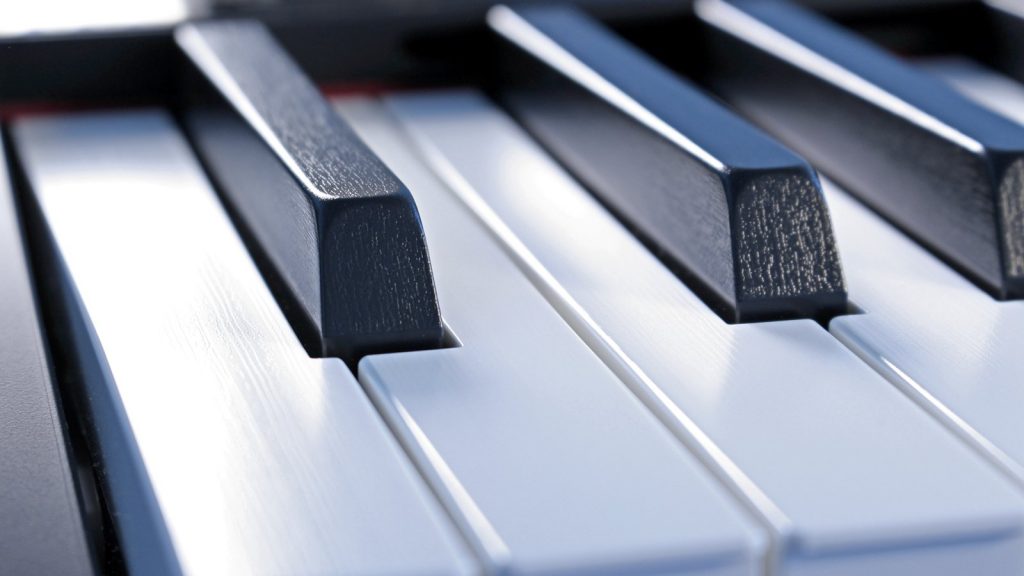
Similar to the previous model, the S1000 offers 18 sounds, focusing on acoustic and electric pianos, as well as organs. Its 192-voice polyphony is ample for a model priced below $1,000. Casio’s PX-S3000, which also falls within this price range, has significantly more sounds and features, such as automatic accompaniment and editable effects.
The two 8-watt built-in speakers sound pleasantly powerful and are low-noise. They emit sound to the front and rear through openings in the casing. You can also add a virtual surround effect. Depending on the setup, the impression varies slightly, but the perceived dimensionality of the sound adds a nice vividness to the speaker signal. This effect only affects the speaker sound; the line output and headphone signal remain unaffected.
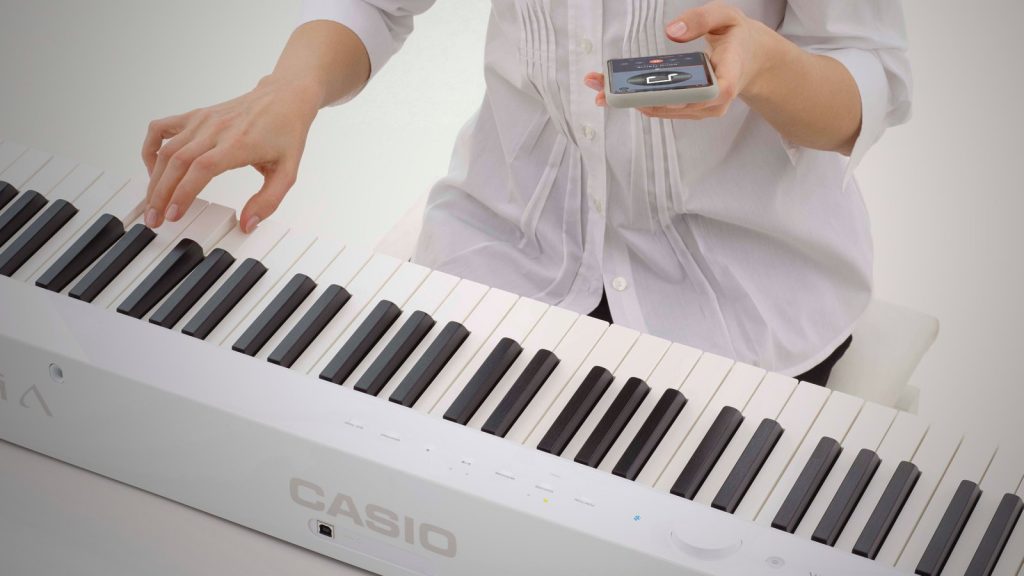
The three main concert grand piano sounds are variations of the same multisample and range from natural and muted to open and assertive. Casio’s clean, balanced sound is realized across the entire keyboard range. Compared to its predecessor, the S1000 has upgraded string and damper resonances, as well as simulated grand piano mechanical noise.
Five sound parameters can be adjusted across four intensity levels, or they can be switched off completely. This allows you to customize the grand piano sound to your preferences, not to mention the valuable brilliance control. Overall, it’s a flexible and expressive grand piano sound that conveys more brilliance and authenticity than the previous model.
In addition to the two good acoustic pianos for rock and jazz, there are vintage classics: the Fender Rhodes and Wurlitzer electric pianos. The FM pianos, with their crystalline sound typical of ’80s pop music, are also a joy to play.
There are also four organs, including a church organ and a Hammond organ; two string ensembles; a vibraphone; a harpsichord; and a double bass. All of these range from satisfactory to good. However, the bass is the only split sound. Feel free to layer all other sounds, adjusting the volumes of the lower and upper sounds as you see fit. Last but not least, there are reverb and chorus effects, each with four types.
Operating the PX-S100 is slightly different compared to the PX-160. The main sounds in the “Grand Piano” and “Electric Piano” categories are directly accessible. The same goes for the integrated metronome, song player, and recorder. Most other functions require key combinations.
For example: “Sound Mode” plus C2 or C#2 increases or decreases the seven-stage brilliance. The keyboard sound and MIDI and audio song volumes are adjusted with “Function” plus D5 to G5. Holding down the “Grand Piano” and “Electric Piano” buttons and then pressing a piano key lets you select one of the other sounds as an Upper 1 or Upper 2 sound in the layer. To use all the available features, consult the supplied “Keyboard Functions List.”
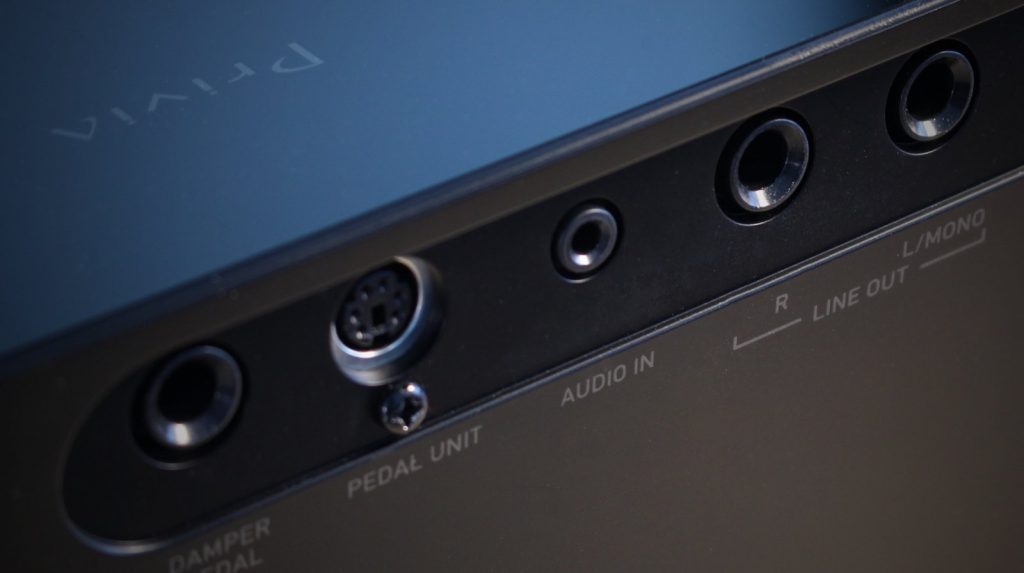
The PX-S1000 has 60 integrated MIDI songs, mainly classical piano pieces with separable right- and left-hand voices, which is a feature familiar from the PX-160. The PX-S1000 also features an integrated two-track MIDI recorder with storage space for ten songs. Additionally, the “Duet” function divides the keyboard into two independent sections for student-teacher exercises.
There is also a global memory function for all individual settings, which is familiar from the predecessor. However, the portable piano does not offer real registration memories. This feature is found in the PX-S3000, the more expensive model, where it is indispensable. This more expensive model offers 700 sounds, an automatic accompaniment function with 200 styles, and an audio recorder.
New features include the ability to play back audio via the speakers or headphone jacks using either an audio input or Bluetooth. There is even a “Center Cancel” function that suppresses the main vocal track, allowing you to take over. You can also adjust the reverb effect for audio songs.
The PX-S1000 now supports the free “Chordana Play for Piano” app from Casio, which is available for iOS and Android. The app is compatible with all current Casio digital pianos. Using a tablet with the app installed allows you to conveniently operate the PX-S1000 with the control function. Additionally, the app offers a note display for the integrated MIDI songs, as well as MIDI and audio players.
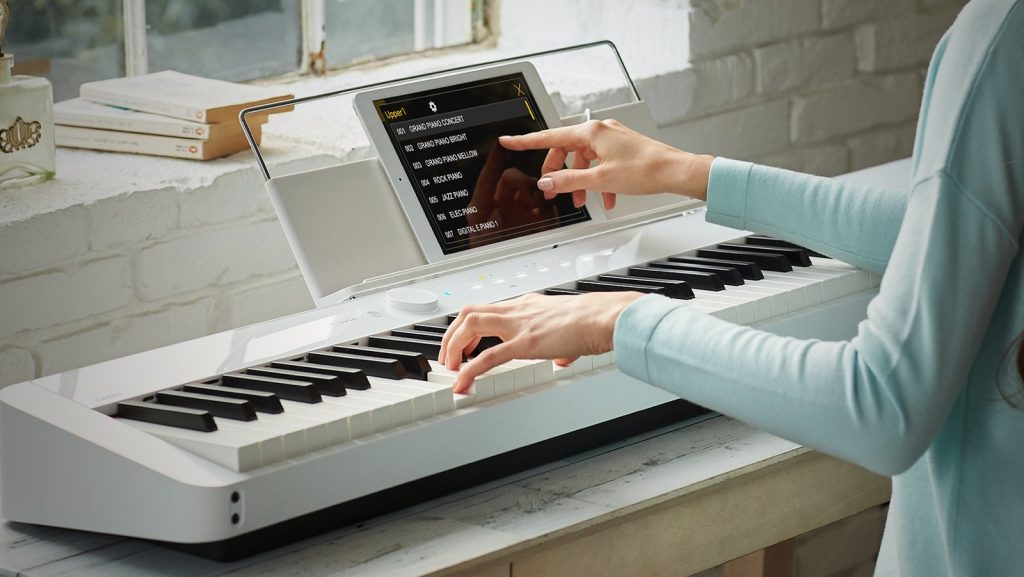
The PX-S1000 offers more than just excellent grand piano sounds and a decent keyboard. The new Casio impresses with its compact design and extensive features. In addition to standard features like practice songs and a MIDI recorder, this super-slim, portable piano offers Bluetooth audio, app-controlled operation, and flexible sound tuning for its piano sounds. Casio brings an elegant look to the entry-level price segment with its new design. It has a convincing appearance.

Release date: April 2019
Keyboard: 88 keys, Smart Scaled Hammer Action
Polyphony: 192 voices
Sound generation: Sampling
Included accessories: Power supply, music stand, single foot switch as sustain pedal (optional sustain pedal and triple pedal)
Piano app: Casio Chordana Play for Piano (free of charge, available for iOS & Android)
Manufacturer: Casio
The PX-S1000 offers more than just excellent grand piano sounds and a decent keyboard. The new Casio impresses with its compact design and extensive features.
You are currently viewing a placeholder content from Facebook. To access the actual content, click the button below. Please note that doing so will share data with third-party providers.
More InformationYou are currently viewing a placeholder content from Instagram. To access the actual content, click the button below. Please note that doing so will share data with third-party providers.
More InformationYou are currently viewing a placeholder content from X. To access the actual content, click the button below. Please note that doing so will share data with third-party providers.
More Information